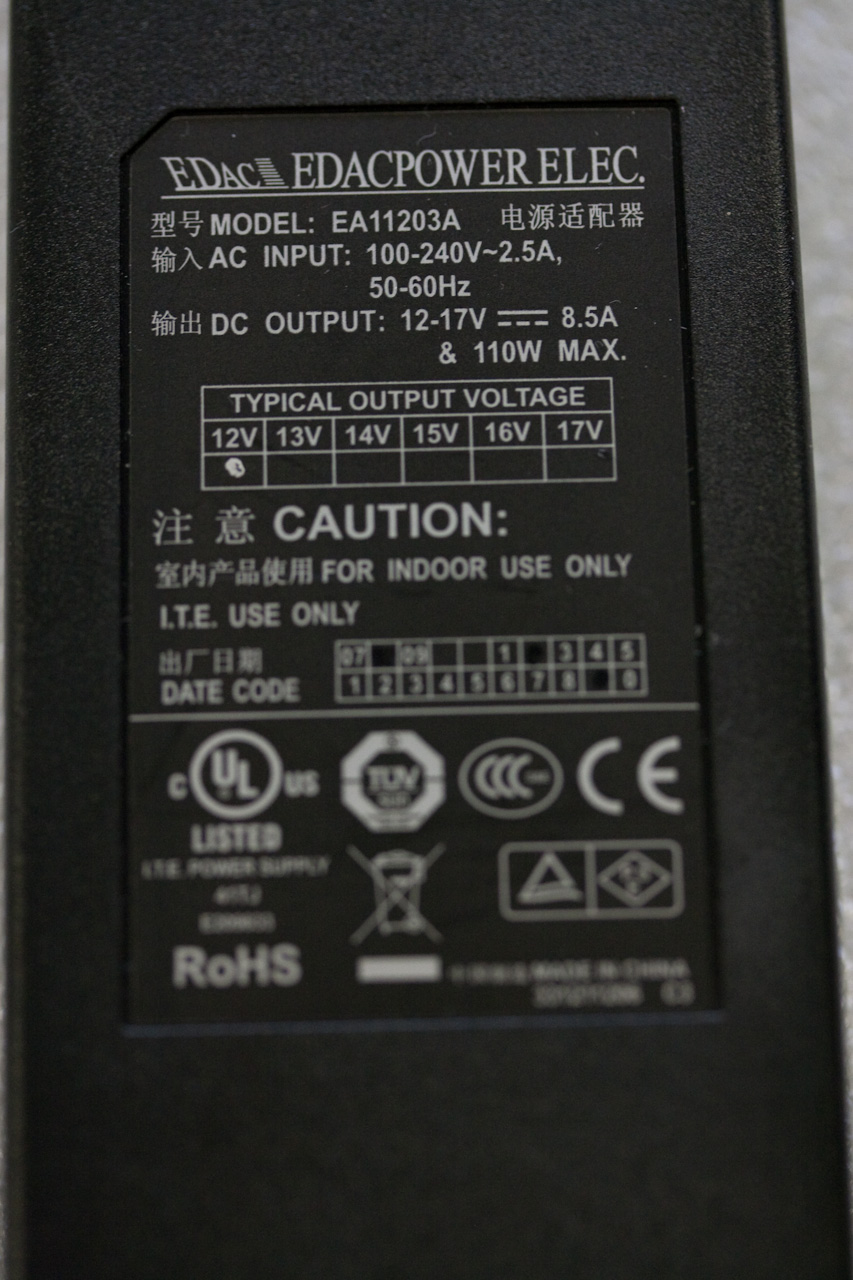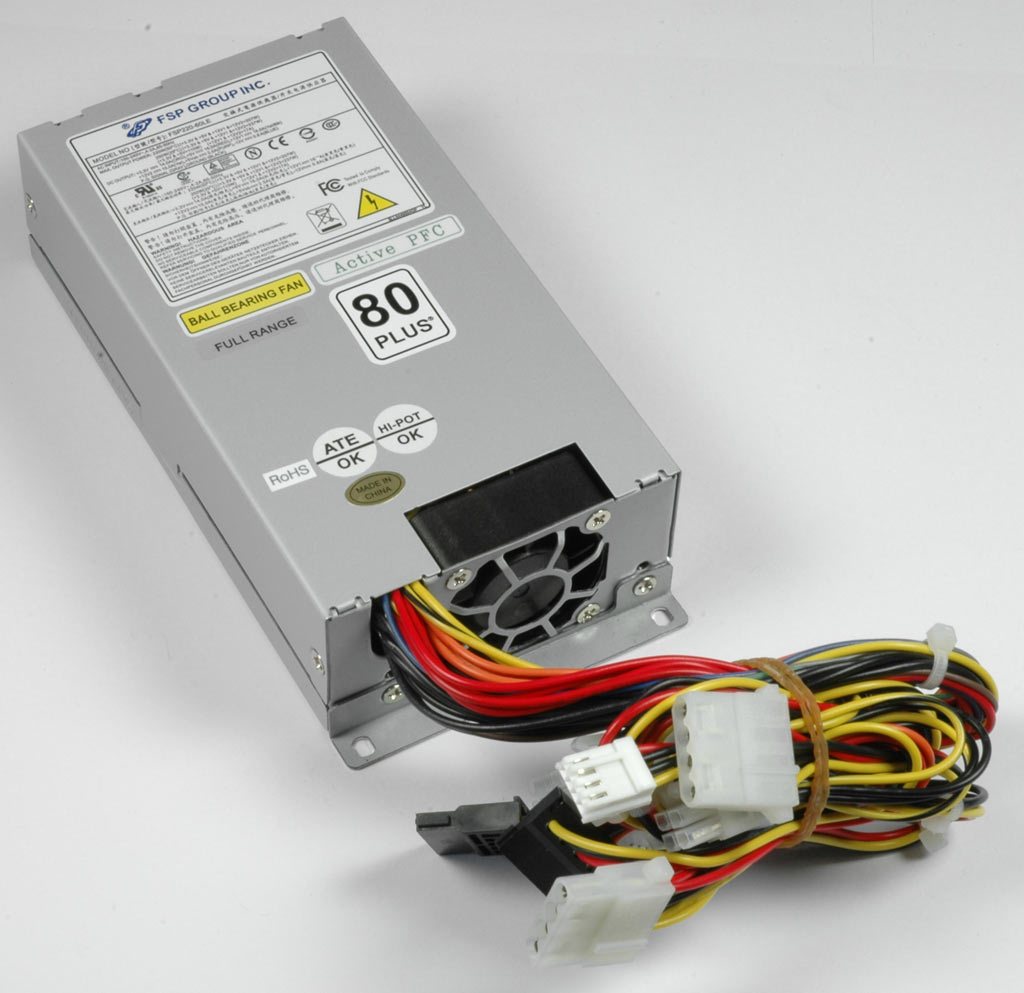Nvidia's Ion: Lending Atom Some Wings
Power Consumption: Better, But...
One of the critical areas in the battle between the 9400M and the 945GC was the overall power consumption of the platform. Unfortunately, we had difficulty measuring power use because the reference Ion platform and the D945GCLF motherboard use very different power supplies. On the Ion, an external power brick converts AC power to 12 V DC, which is then divided into several voltages—3.3 V, 5 V and 12 V—by the motherboard power stage. And since we measure power consumption at the AC outlet, we need to know the output both of the brick and of the power stage on the motherboard.
Nvidia wasn’t able to give us any information, and we didn’t have the necessary equipment for taking measurements at the time of the test. Fortunately, though, the brick used by Nvidia has been tested by our confreres at SilentPCReview. To be more exact, they made careful measurements of the brick’s efficiency with a 12 V DC -> 12 V, 5 V, 3.3 V DC converter, so their figures are a good estimate of the output of the Ion’s power supply. The power-use values shown below were calculated based on the results of SPCR’s test. We should make it clear that they should be taken for what they are, since there are many sources of possible variations. But they’re the best approximation we’re able to make at the present time.
In contrast, the Intel D945GCLF motherboard employs a traditional ATX AC/DC power supply. We used a low-power PSU in order to ensure good efficiency at very low loads. Our choice was an FSP/Sparkle Power SPI220LE, which we’d already used in our earlier tests of the Atom. This power supply has also been tested by SPCR, using the same protocol as for the preceding components, so we felt it was a good idea to again use their figures, to avoid introducing errors.
| Header Cell - Column 0 | Efficiency, Sparkle Power PSU | Efficiency, Ion Platform Power Supply | ||
|---|---|---|---|---|
| Row 0 - Cell 0 | Consumption at the AC outlet (W) | Efficiency (%) | Consumption at the AC outlet (W) | Efficiency (%) |
| SPCR Measurement | 26.3 | 73 | 28.3 | 77.7 |
| 40.8 | 77.7 | 47 | 85.6 | |
| Extrapolation | 23 | 71.9 | 15 | 72.1 |
| 32.7 | 75.1 | 25.9 | 76.7 |
| Header Cell - Column 0 | Consumption at the AC Outlet (W) | Actual Calculated Consumption (W) | Ion Advantage (%) | ||
|---|---|---|---|---|---|
| Row 0 - Cell 0 | Ion | D945GCLF | Ion | D945GCLF | |
| No Load | 15 | 23 | 10.8 | 16.5 | -34.6 |
| Peak Load | 25.9 | 32.7 | 19.9 | 24.5 | -19.1 |
The bottom line, granted the suppositions we’ve made, is that the Ion platform proved to be substantially more economical than the basic Intel platform. We estimate its advantage as being between 19% and 35%, depending on whether PC is idle or under load. These results are in line with the theoretical TDPs cited by the manufacturers, but they’re still a little surprising: the GeForce 9400M has a TDP of only 12 W, compared to 25.5 W for the 945GC + ICH7 tandem, so we expected a bigger difference.
To be sure of just how much more energy-efficient the Ion is compared to the Intel platform, we’ll need to run tests under conditions that make for better comparison. It shouldn’t be long until we can; Nvidia tells us that Ion motherboards in micro-ATX or mini-ITX formats will available soon, so we’ll get back to you in a few weeks. But we can already say that the Ion is clearly a more energy-efficient platform than the standard Atom platform.
Get Tom's Hardware's best news and in-depth reviews, straight to your inbox.
Current page: Power Consumption: Better, But...
Prev Page HD Video/Blu-ray Playback Next Page ConclusIon-
rootheday Let's be clear - the Ion reference platform is for a nettop - not a netbook. Its based on the dual core Atom 330. I doubt very much that Ion with a single code Atom 230 or N270 would have enough horsepower to do the BD decryption required for BD playback.Reply -
matthieu lamelot Please, let me be clear : the platform reviewed was equipped with an Atom 230, not a 330, as is perfectly obvious from the pictures (one single die on the CPU package).Reply
And, yes, it's powerful enough (thanks to the 9400M) to smoothly playback a BD like Casino Royale (including the HDCP decryption). CPU utilization rose to around 67 % during that test.
And even though the Ion ref platform is kind of a nettop (and we tested it with that in mind, comparing it to Intel's nettop platform), it could also fit in a netbook since 9400M TDP is very close to that of Intel 945GSE chipset that is found in most netbooks today : 12 W compared to 9,3 W. Nvidia and its partners would just need to drop 9400M's frequency a bit. -
randomizer Matthieu, I'm not sure who makes the onboard sound, but if it's Realtek you need to have Stereo Mix enabled for CoD 4 to run. Also, I found that I couldn't start CoD4 (with what appears to be the same error even though I can't really understand it) without plugging in speakers. Yes, speakers. Although any output device might have sufficed.Reply -
mitch074 Realtek codecs are quite common (thus I concur with randomizer); some are quite advanced in that they do automatic detection of what kind of hardware is connected to what pin (through best guess from device impedance, considering the low dB noise those codecs output they are some precise piece of ingineering), allowing autodetection of the sound setup (they will detect if you replace a microphone with a set of speakers, and switch configuration from stereo+microphone to 4.0 audio, for example; that requires driver support though).Reply
If CoD4 requires sound (some games are funny this way) and no hardware is plugged in, then the sound card may report a status CoD4 wasn't expecting, and refuse to run. -
randomizer Well you'd think that they would have patched the game so that it doesn't have problems with needing Stereo Mix and output devices by now. What if my speakers are dead? That's just poor...Reply -
amnotanoobie I immediately looked at the benchmark images, instead of reading the accompanying text around it, and I thought "WTH is AMD (green bar) doing on the nVidia ION platform." I thought I was linked to another page of another review.Reply -
hei man pls ...for now nvidia platform has some advantages but with DX11 you will not need gpu any more ...so for now it's ok for future this platform will be nothing but dustReply
-
nukemaster You may not need a GPU, but a GPU is still far faster then the cpu at running games.Reply
Good review its about time Atom got a little help. -
liemfukliang I wont buy atom until it can run PCMark Vantage, 3DMark Vantage. I don't mean it has to be high score, I just one it is finish the test and not error. :)Reply -
Tekkamanraiden I'd like to be able to buy one of those little reference systems. It would make a nice little HTPC.Reply

